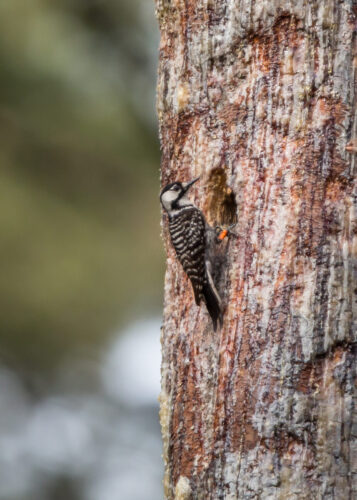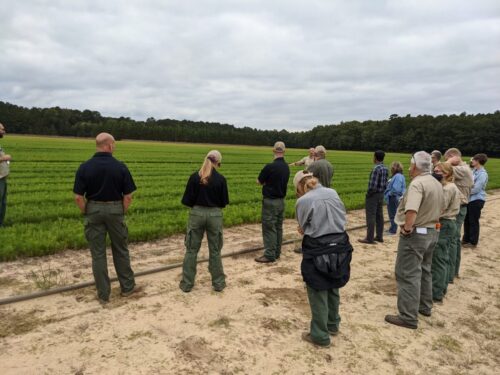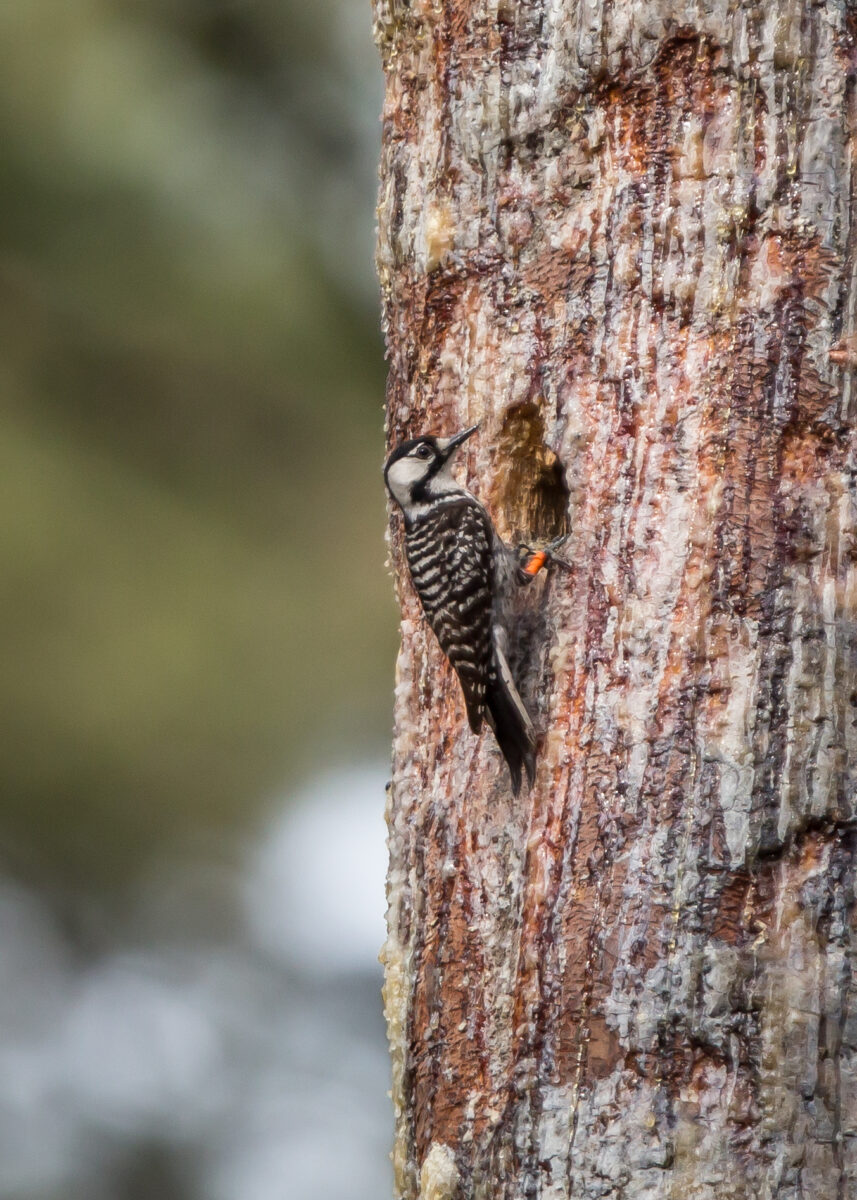Woodpecker Attends New Employee Orientation
November 15, 2021 8:54 am

By Scott Bachman, DOF Senior Area Forester
Several weeks ago, the Virginia Department of Forestry (DOF) Eastern Region had the opportunity to show off our work for the agency’s most recently hired employees, during their orientation tour. A group of our region’s staff – Heather Dowling, Jeremey Falkenau, Bryant Bays, Lisa Burke, Brenda Clarke and I – collaborated to come up with several days of activities that we hoped would be of interest to the new employees. A number of internal and external speakers provided a buffet of information, ranging from eastern Virginia history to the health of the James River and her fishery to state-owned (non-Department of Forestry) land management. There were also field visits to see the DOF seedling nursery and several partner properties in the Big Woods area of Sussex County, and to view community forestry efforts in the Richmond area.

New employees check out the young pines at DOF’s Sussex nursery.
One of our Sussex County stops was at Piney Grove Preserve, a property owned by The Nature Conservancy (TNC). This tract is located just north of the Big Woods Wildlife Management Area (WMA) and Big Woods State Forest – public lands that would not exist if it were not for the TNC’s conservation efforts. TNC purchased the Piney Grove acreage from John Hancock Mutual Life Insurance Company in 1999; prior to Hancock’s ownership, the property was owned by Gray Lumber Company. In 2006, TNC expanded Piney Grove through the purchase of 5,000 acres from International Paper (IP). In 2010, federal grant money and state funds enabled DOF and the Virginia Department of Wildlife Resources (DWR) to purchase roughly 4,400 acres of the former IP land from TNC to establish both the State Forest and the WMA.
The group’s visit to Piney Grove Preserve was led by Brian van Eerden, director of the Virginia Pinelands Program for TNC. Piney Grove was identified in the late 1990’s as the only feasible site in Virginia to conserve the federally endangered red-cockaded woodpecker. These birds nest only in mature, living pine trees with soft heartwood – a very specific habitat type that has become increasingly rare throughout the Southeast. By 1999, only a dozen birds were located on the Piney Grove property, representing the northernmost colony of the birds in the U.S. Over the years, TNC (with assistance from state and federal agencies) has manipulated the forest to create better habitat for the woodpecker and other open-forest animals and plants. Today the Piney Grove property has the largest number of red-cockaded woodpeckers in Virginia, perhaps as many as 70 birds.

Red-cockaded woodpecker; photo by Bobby Clontz, TNC
An amazing thing happened as Brian was telling us of TNC’s steep learning curve on forest management, prescribed burning, and woodpecker biology. Suddenly, a call rang out in the open canopy of the pine forest. Brian stopped and said, “Did you just hear that? That was a red-cockaded woodpecker call!” (Brian is an excellent bird call identifier; the rest of the group, not so much.) We all listened intently, and the call rang out again, from a tree right next to our group. As Brian scanned the crystal clear sky, a flicker of wings beat overhead. The group looked up to see a red-cockaded woodpecker in flight!
According to Brian, we were the only humans in Virginia to see one of these woodpeckers in the wild that day, because the preserve is not currently open to the public. Hopefully the chance to see a red-cockaded woodpecker on publicly owned land will change soon. The management of the three partner groups should go a long way to increasing the numbers of this small but significant bird. The Big Woods WMA next door is now thought to have some nesting birds, but finding them would be quite the task. The wildlife management area is open to the public with a permit. So, if you’re in the right place at the right time, maybe you’ll be lucky enough to see a bird.
Endangered species near their property can scare some landowners into a panic. For this particular species, landowners shouldn’t be concerned. TNC manages a state and federally recognized program called a Safe Harbor Agreement to protect these birds. Landowners near woodpecker colonies can enroll in the program and avoid many if not all of the issues that can come with having an endangered species take up residence. There are some management requirements to enroll in Safe Harbor, but the payoffs are great. In the event that the birds begin nesting on an enrolled property, the owner can inform TNC of forest management plans, and the organization will trap and relocate the birds prior to the planned management. That’s a great deal for the landowner, the woodpecker, and TNC’s goals.
To learn more about these fascinating properties in Sussex County, check out Big Woods State Forest, Big Woods Wildlife Management Area, and TNC’s Virginia Pinelands Program.
Tags: Conservation, Partnerships, Wildlife
Category: Education, Human Resources
